Smilegate Future Lab Department Head Sook-hyeon Oh
There is a special space in level B1 of the Smilegate Campus. It is a ‘No Parent Zone’ where only children are allowed to enter and ‘no rules is the governing rule.’ This is ‘Future Lab,’ where original creative work is born from the creative ideas of children.
Let’s hear from Department Head Sook-hyeon Oh, a passionate leader who has been with Future Lab since its launch in 2016, about the creative environment being built by Future Lab.
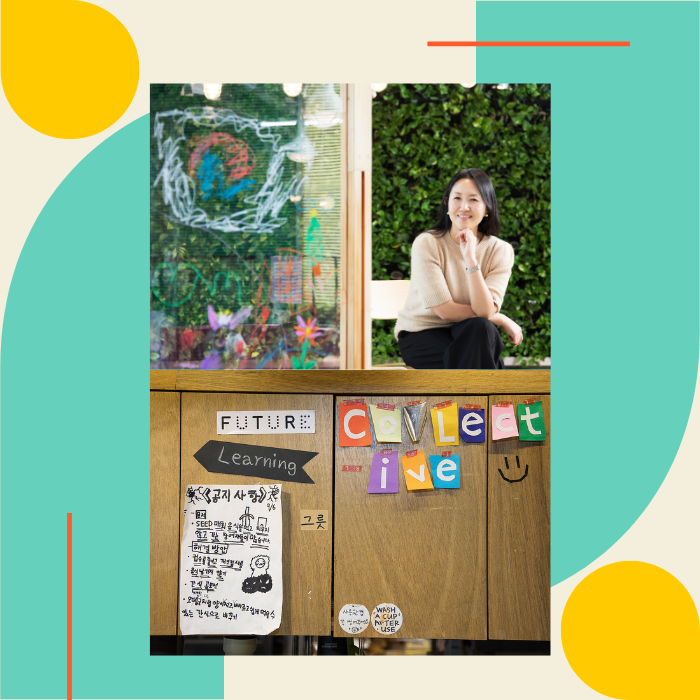
Q. Please introduce Future Lab.
Future Lab is an initiative launched by Smilegate’s social contribution foundation Hope Studio. The lab is operated in two tracks, one track where we build a creative environment for children and youths, and another track where we revitalize the creative and entrepreneurship ecosystem for youths. Future Lab serves as the focal point to realize the tracks in creativity, original work, and entrepreneurship pursued by Smilegate Group.
Q. Please tell us about the background behind the birth of Future Lab and the process of how Future Lab came to be today.
Future Lab was operated as a pilot project for a year upon its launch in 2016. The space for Future Lab at the time was a white cube. It had nothing, but anything could be used to fill up the space. It was a space with infinite possibilities where anything was possible. Based on our principle that ‘all children are creative,’ we conducted experiments to discover which environment would help manifest that creativity. Looking back, we have come to be fearless of failure and attempted many challenging tasks as a result of going through those experiences. We have reflected the meaningful results from our year-long pilot project to build the space we have today. What is noteworthy about this space is that it is evolving like an organism, just as the children participating in our programs evolve every year. An order unique to Future Lab has been established with the children who visit, and the space is continuously being remade into a new space by the children.
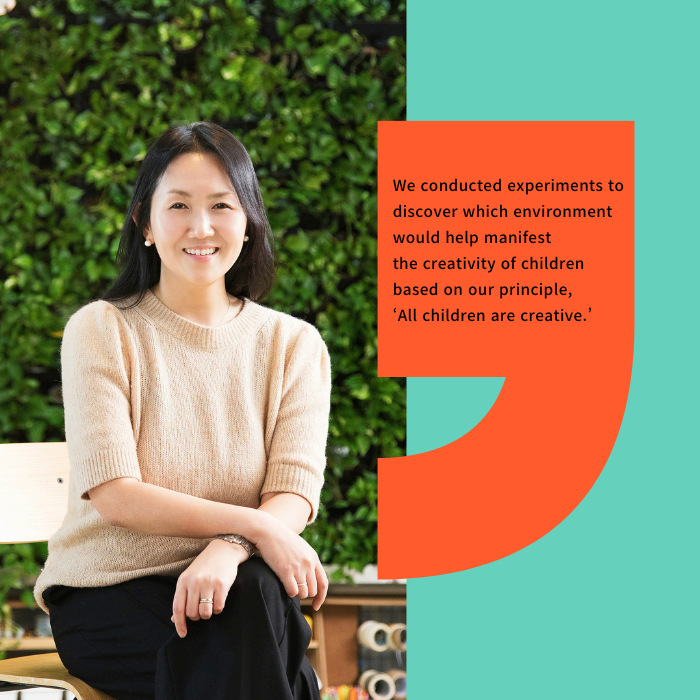
Q. How do you think that the various programs at Future Lab will contribute to manifesting children’s creativity?
Our projects are planned in consideration of the three values of the Future Lab. The first value is that all children are creative, the second is to think from the beneficiary’s perspective rather than the supplier’s perspective, and the third is to execute what is doable rather than using catchy slogans. We guarantee freedom of behavior for the children within the scope of these three values. For example, children who have entered the lab after bidding farewell to their parents at the entrance are not directed anywhere. Many children are surprised at first and even stand still at the entrance, and that is why we have intentionally designed the entrance with diagonal lines for the children to be able to see the entire space at a glance. It makes the children think, ‘I wonder what is happening at the low staircase here,’ ‘There is a space for carpentry up ahead,’ or ‘There are other children like me reading books in a place that looks like an attic.’ We wait until the children finish exploring the space by themselves and then move to a location that draws their interest. There are no rules established by the staff of Future Lab.
Q. How do the children accept the unique culture of Future Lab where ‘having no rules is the governing rule’?
It is easy for adults to establish rules. Adults make rules just they also establish ‘restrictions’ and ‘punishment.’ Children do not ask even why the rules were established; they simply come to believe that it is a virtue to keep the rules. Some time ago, we held a discussion on the operation of the space with about 40 children sitting in a circle. There were various ideas, such as suggesting a fine of one-thousand won for throwing food out without finishing it or a three-strike rule where violators can no longer come to the space after three strikes. During this process, one child suggested, “How about we each think of ourselves as an owner of this place?” and this concluded the discussion. Through this, we learned that rules exist even in the world of children, and we respect that.
Q. The programs of the Future Lab consist of consilient activities across various fields, including art, science, and IT. What can we expect from these programs?
The reason the programs of Future Lab pursue consilient methods without boundaries between fields is that children do not have boundaries either. Adults often already have their lines set in terms of their thinking and behavior. These lines are established based on their personal experiences and the information they have obtained, and this is why adults hesitate to break down their barriers. But children are different. They are used to accepting various stimuli without prejudice.
There are also no boundaries in the world of children. Our staff at Future Lab wish to see children communicate in ‘diagonal relationships.’ ‘Diagonal relationships’ are relationships where children can mutually complement each other from an equal standing, as opposed to vertical relationships with their parents and teachers and horizontal relationships with their friends.
We think that ‘diagonal relationships’ can build a wide spectrum of relationships to expand the world of children. So at Future Lab, we operate programs for children to build diagonal relationships. For example, if children work with artists and actively exchange opinions, many interactions can take place throughout this process, and this in turn will broaden and expand the children’s perspectives and world views.

Q. Among the programs of Future Lab, Smilegate Membership (SGM) draws attention from the fact that it provides full-scale support for creators to focus on creation. What is the purpose of this program?
SGM is a program that provides aid to creators in various fields such as indie games and artificial intelligence (AI) so they can focus on their projects. It is operated every year for each class and the 14th graduation ceremony took place this year. It is remarkable how the seniors and juniors from the 1st to the 14th class graduates actively communicate with each other. There are some who have become junior executives, and there are also juniors who are attempting to build new projects. They have formed a community where they share their knowledge and experiences with one another.
We also have the ‘Self Encourage, Exciting Discovery (SEED)’ program for children and the youths. SEED consists of 4~5 simultaneous workshops that are conducted for 32~40 students for each class. The reason that we conduct multiple workshops in small teams is because we wish to provide an opportunity for children to discover their own interests and to explore potential areas of interest.
The artists, scientists, humanities scholars, and philosophers that participate in the SEED program are not just people who teach, but rather co-workers who collaborate with the children. The purpose of this program is to broaden the areas of creativity and original work as children engage in collaborative projects with experts.
Q. The programs offered by Future Lab also draw attention due to the fact that they are operated through a systemic connection with Orange Planet and Smilegate Investment. What kind of synergy could we expect from this?
For example, a creator who has participated in a Future Lab program can receive aid from Smilegate’s entrepreneurship aid foundation Orange Planet and land investment from Smilegate Investment during the scale-up process. We expect that the base of the creative ecosystem will expand if creators can engage in creative activities and receive systemic aid in their entrepreneurship process.
In particular, we have created a virtuous cycle where creators who have grown through various programs of Future Lab serve as mentors to support and cheer on younger creators. This is also a very significant feat for us. Donations from senior creators are used to host exhibitions to support creators who are in their early phases as creators. If the donations from seniors are seeds, then trees will grow from these seeds, and these tree will eventually grow to fruition. All of these processes are truly enjoyable and rewarding.
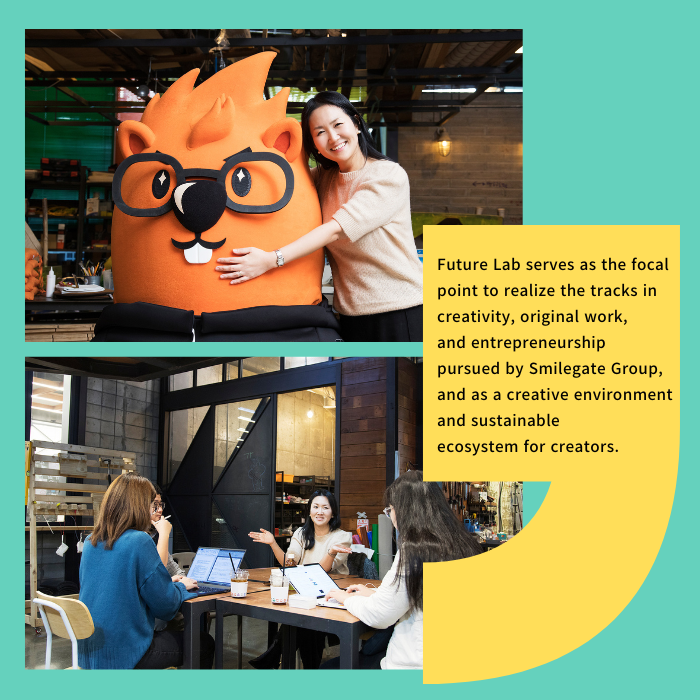
Q. Future Lab has had some noteworthy achievements, such as Burning Beaver 2022, held in December last year. How do you feel about this?
One of the significances of indie game festival Burning Beaver 2022 is that it was welcomed and received support from creators developing indie games. There were difficulties, as this was our first time hosting the festival, but it was encouraging that indie games and the general public came in contact and the indie games were showcased to a wider audience at Garosu-gil, one of the most popular destinations in Seoul. It is a symbolic achievement that indie games, which had mostly been enjoyed by small exclusive groups previously, have been showcased to a wider audience in the general public. Future Lab is proud that we were able to establish a platform where those who have created indie games and pioneered their indie game businesses were able to showcase the products of their hard work to the general public through Burning Beaver 2022.
Also, we invited Professor Mitchel Resnick of MIT Media Lab and hosted Connecting Dots: The Expanding World of Creativity in December. At this conference, a college student who had previously attended one of Future Lab’s programs during his adolescence gave a presentation and said, “My experience at Future Lab was a nourishment for growth.” Hearing this was a memorable moment for me. I was also very grateful to receive feedback from many educators who attended the conference stating that the sincere presentation from this college student rang true and deep.
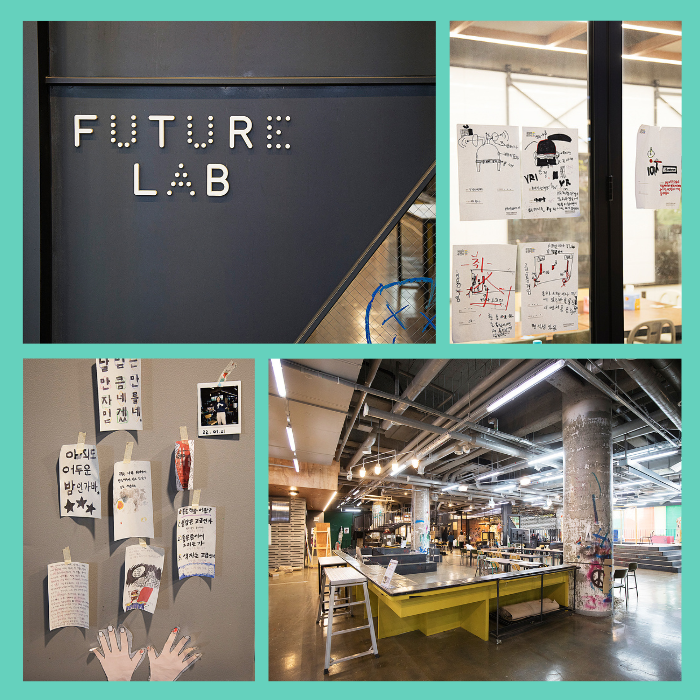
Q. Please tell us about the plans and goals of Future Lab for 2023.
In 2023, we are collaborating with Epic Games Korea for the Unreal Engine Programmer Development Program. This program is the first of its kind in the Korean gaming industry. We expect this program to help realize the strengths of Future Lab’s values in creativity, originality, and entrepreneurship in various ways. We also plan to make Burning Beaver a more complete festival.
In addition, we have plans for the beta launch of the online learning platform ‘Future Lab Meta’ for children and youths. With the metaverse capable of bilateral communication, we expect that children will come to learn naturally through the process of realizing their creativity and creating their own unique work.
Future Lab plans to continue its effort to build a healthy ecosystem for creativity and entrepreneurship through education programs, indie game festivals, and the launch of new services in 2023.
* People Insight
‘People Insight’ is a corner where the audience can meet people with relevant insights to promote the corporate culture of Smilegate, which emphasizes the importance of creativity and originality. It provides an opportunity for the audience to think once again about the value and significance of the creativity and original work pursued by Smilegate through the various experiences and knowledge shared by the guest speakers.
#Smilegate #Smilegate Future Lab #SEED #Unreal Engine Programmer Development Program


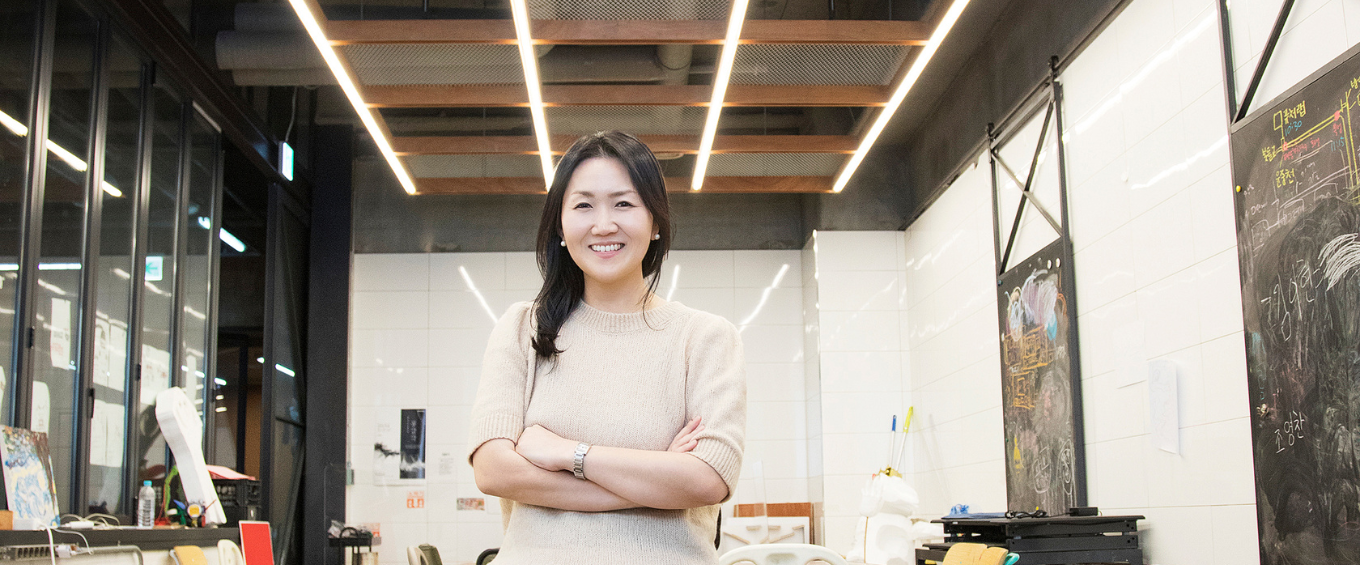


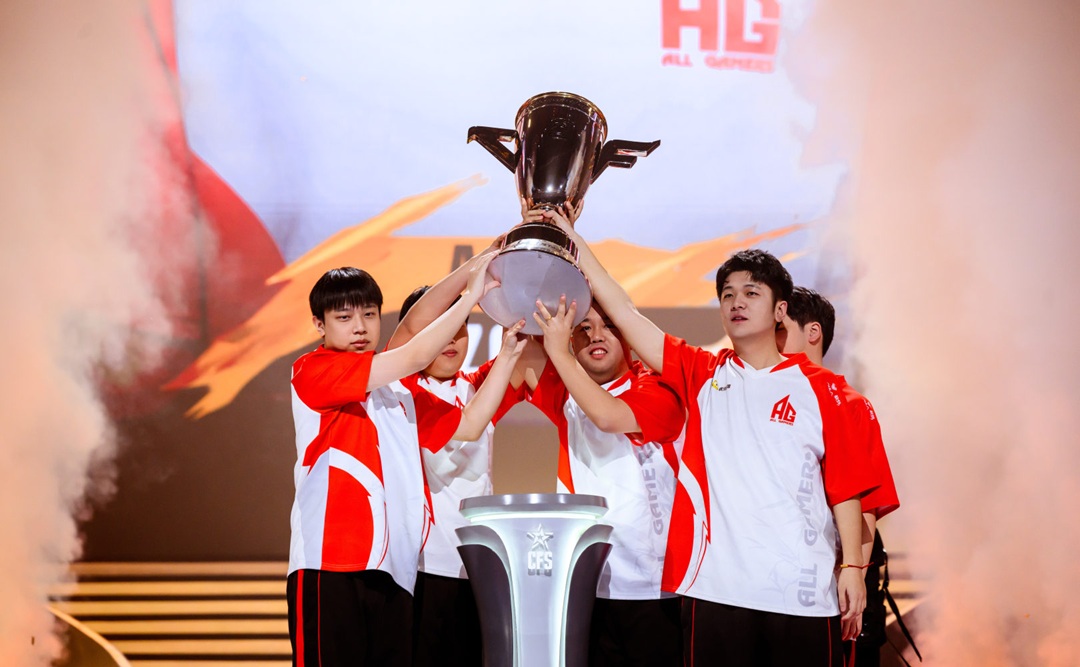


 TOP
TOP
